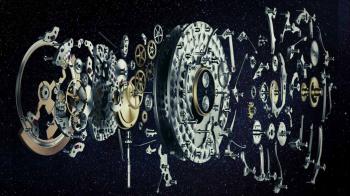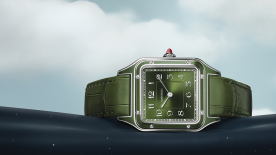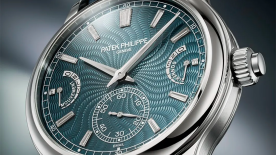If you’ve worked with watches for any length of time, you’ll come to find out that the date function is a surprisingly contentious subject. Some people, myself included, just don’t see the point of it. I have exactly one watch with a date function, which I hardly ever bother to set. I don’t really know anyone with a simple calendar watch who regularly sets the date correctly either.
And yet, companies keep making watches with date displays. They tell me, oh, it’s something additional for the customer. Not really sure what they mean by “additional”, unless they mean “additional pain in the neck”.
Am I missing something? Because this seems like a massive disconnect between what companies think is useful and what people actually use.
On the other hand, people do tend to make the effort to set their annual or perpetual calendars accurately. It’s understandable, because these are watches that generally cost a bit more than average. As the owner of an item that costs more than average, you’d be more likely to spend more time taking care of it, making it look and perform its best. This principle applies across the board, whether you’re talking about watches, cars, fancy audio equipment, even things like — I don’t know — super-expensive Japanese chef’s knives or something. And an annual or perpetual calendar really does provide a lot of value in return for the effort you put into it. It stays accurate for a lot longer, for one thing, and it bestows a certain amount of prestige upon its wearer.
Here’s a handy breakdown of calendar watch accuracy, assuming that the watches are kept continually wound and are reasonably well regulated.
Simple calendar: Needs correction five times a year
Annual calendar: Needs correction once a year
Perpetual calendar: Needs correction once every 100 years
Secular calendar: Needs correction once every 400 years
Eternal calendar: Needs correction once every 1,000 years
If you’ve been paying attention, however, you’ll have picked up on the fact that none of these impressive accuracy figures are all that meaningful unless the watch is under constant power. Unless it’s an automatic watch being stored in a watch winder (and assuming the electricity never goes out), even the watch with the longest correction interval is only as accurate as the duration of its power reserve. Which in most cases is a few days.
There are some extremely beautiful perpetual calendars out there, as highlighted by our intrepid contributor Olivier Müller (look out for another selection tomorrow, this time focusing on innovative perpetual calendars), but if you really want to put the “perpetual” in perpetual calendar, don’t forget about the power reserve.
(Some of you will know where this is going. Some of you might be thinking of Vacheron Constantin and their Twin-Beat technology. Come back on Friday; you won’t be disappointed.)





